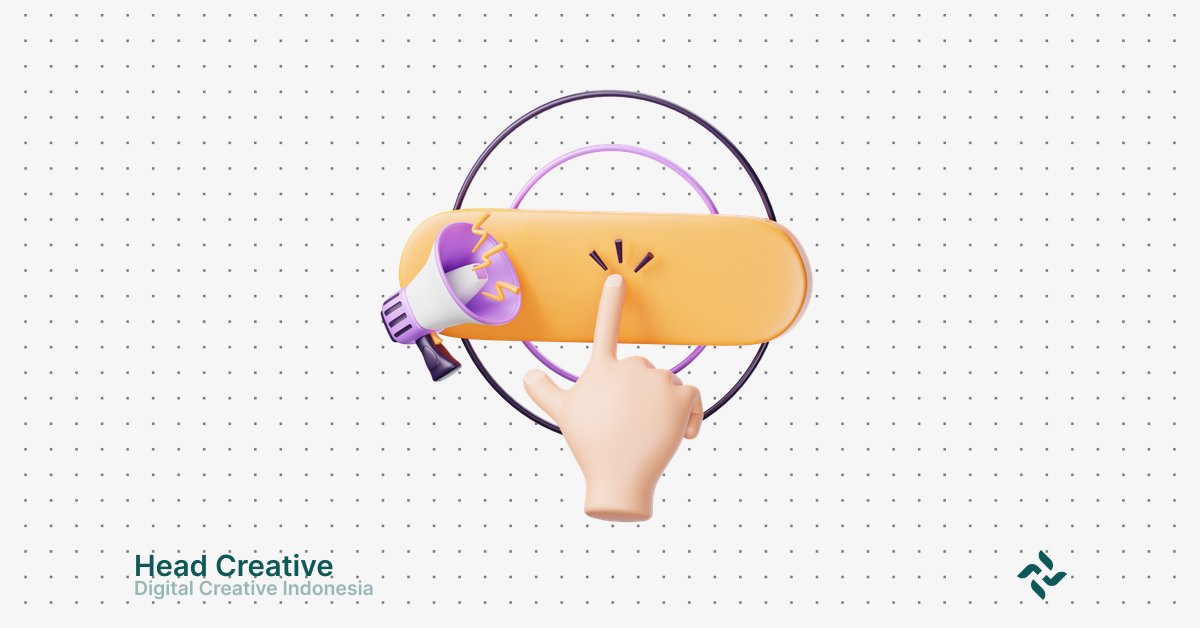What Is a Call-to-Action and Why Is It Important?
In the world of digital marketing, a Call-to-Action (CTA) is often considered the “driving force” of a marketing strategy. A CTA is a text, button, or image designed to encourage website visitors or audiences to take specific actions, such as signing up, making a purchase, or downloading something.
A CTA is not just an additional element—it’s the bridge that connects your audience to your business goals. Think of a CTA as the green light guiding users toward conversion. Without it, your visitors might just pass through without taking further action.
Why Are Call-to-Actions Important?
The importance of CTAs cannot be underestimated, and here’s why:
1. Increasing Conversions
An effective CTA directly increases the likelihood of converting your audience into customers or leads. For example:
- A “Buy Now” button on an e-commerce site simplifies the purchasing process.
- A “Sign Up for Our Newsletter” prompt encourages visitors to become email subscribers.
According to a report by WordStream, pages with clear CTAs have a 202% higher conversion rate than those without CTAs.
2. Guiding Users Clearly
Website visitors often need clear guidance on the next step. A CTA provides specific directions, such as:
- Downloading a free eBook.
- Contacting the sales team.
- Signing up for a free trial.
Clarity is key. If users are unsure about what to do, they are more likely to leave your site.
3. Maximizing Marketing Campaign Efficiency
A marketing campaign without a CTA is like an ad without a “Contact Us” or “Visit Store” button. A study by AdRoll reveals that digital content with CTAs achieves a 61% higher click-through rate (CTR) compared to content without CTAs.
Simple Example: How Does a CTA Work?
Imagine running an online store. Without a CTA, visitors might browse your products without knowing what to do next. However, with buttons like:
- “Add to Cart”
- “Buy Now and Get 20% Off!”
They are far more likely to take the action you want. An engaging CTA is a powerful persuasion tool.What Are the Characteristics of a Good Call-to-Action?
A successful CTA has several key traits:
- Concise and Direct: Examples include “Sign Up Now,” “Try for Free.”
- Visually Prominent: Use contrasting colors to make it stand out.
- Benefit-Oriented: Focus on what users gain, such as “Get 50% Off.”
- Action-Driven Language: Words like “Now,” “Free,” or “Limited Time” create urgency.
Functions and Benefits of Call-to-Action on a Website
A Call-to-Action (CTA) is a strategic element that determines whether your website visitors simply browse or take the desired action. On a website, a well-designed CTA delivers several essential functions and benefits:
1. Increasing User Interaction
One of the main goals of a website is to create an interactive experience for visitors. A CTA serves as the bridge between visitors and the site’s primary objectives.
- Engaging Users Further:
With CTAs like “Read More” or “Watch Our Video,” you encourage visitors to explore more content. This not only increases time spent on your site but also strengthens their connection with your brand. - Simplifying User Navigation:
CTAs provide clear guidance on the next steps. Without them, visitors may feel lost and eventually leave your site.
2. Encouraging Visitors to Take Specific Actions
CTAs are not just decorations—they are strategic tools for prompting specific, measurable actions. Every website has a particular goal, and CTAs help drive visitors toward that objective.
Examples of specific actions driven by CTAs:
- Subscribing: Encouraging users to sign up for updates, promotions, or exclusive content.
- Example: “Sign Up Now to Get Exclusive Tips!”
- Purchasing Products or Services: Buttons like “Buy Now” or “Order Today” simplify the buying process.
- Downloading Free Content: CTAs like “Download Free eBook” attract audiences looking for added value.
- Registering for Events or Webinars: With CTAs like “Register for Free Webinar,” you can expand your reach to a broader audience.
3. Serving as a Tool to Measure Campaign Effectiveness
CTAs are one of the best metrics for evaluating the success of your digital campaigns. Every click on a CTA is direct proof of audience engagement.
How CTAs help measure campaigns:
- Tracking Conversions: With analytics tools, you can see how many visitors clicked on your CTA and completed actions like signing up or purchasing.
- Analyzing Content Performance: If an article includes a CTA, the number of clicks can indicate how relevant the content is to your audience.
- Testing Marketing Strategies: Perform A/B testing with different CTAs (e.g., “Sign Up Now” vs. “Try for Free”) to determine which works best.
Read Also: 5 Key Secrets to Building a Successful E-Commerce Website.
Types of Call-to-Action You Need to Know
A Call-to-Action (CTA) is not just about eye-catching buttons on your website. In fact, there are various types of CTAs that can be used according to your marketing goals. In this article, we’ll discuss examples of CTAs, when and where to use them, and how to align each CTA type with your marketing strategy.
1. Examples of Different Types of Call-to-Action
Each type of CTA plays a unique role in guiding the audience to take specific actions. Below are some commonly used CTA examples:
- Button:
Buttons are the most frequently used and recognizable type of CTA. With standout designs and clear text like “Buy Now” or “Sign Up for Free”, button CTAs are designed to grab attention and simplify actions for visitors. - Banner:
Banners are usually placed at the top or bottom of a page as prominent reminders. For example, a promotional banner might say, “Enjoy 50% Off Today!” - Text Link:
This CTA is often used in articles or email marketing to encourage audiences to click on a specific link. Example: “Click here to learn more.” - Pop-Up or Slide-In:
These CTAs appear automatically after a visitor spends a certain amount of time on your site. For instance, a pop-up offering: “Sign Up Now to Receive Exclusive Newsletters!”
2. When and Where to Use Each Type of CTA
Placing CTAs in strategic locations is crucial for delivering your message effectively. Below is a guide on when and where to use different types of CTAs:
- On the Homepage:
Use large buttons like “Try Free for 14 Days” to attract the attention of new visitors. - Within Blog Articles:
Use text links like “Learn more about this strategy here” in the middle or at the end of the article to encourage readers to dive deeper. - On Landing Pages:
Prominent button CTAs like “Get Special Offers Now!” work well on pages designed to convert visitors into customers. - On Checkout Pages:
Add clear CTAs like “Complete Your Purchase” to guide customers seamlessly through the process.
3. Customization Based on Marketing Goals
An effective CTA must be tailored to your specific objectives. Do you want to boost sales, generate new leads, or grow your email list? Here are ways to customize your CTA based on your needs:
- For Lead Generation:
Use CTAs like “Download Free eBook” or “Register for a Webinar” that offer incentives for visitors to provide their information. - To Increase Sales:
Use CTAs that emphasize urgency, such as “Buy Now Before It’s Gone!” or “Limited Offer Only Today.” - To Boost User Engagement:
Use text links or buttons that encourage deeper interactions, such as “Watch Our Video” or “Follow Us on Instagram.”
Tips for Creating Effective CTAs
- Use a Standout Design: Ensure your CTA’s colors and fonts attract attention without disrupting the overall design.
- Write Clear and Specific Text: Avoid generic phrases like “Click Here.” Instead, use action-driven words like “Start Your Journey Now!”
- Test and Optimize: Conduct A/B testing to determine which CTA delivers the best results.
Take Advantage of Our Services: Website Development Solutions.
Tips for Creating an Effective Call-to-Action (CTA)
A Call-to-Action (CTA) is a critical element with the power to guide your website visitors toward specific actions, such as purchasing a product, subscribing to a newsletter, or downloading content. However, not all CTAs are created equal. Here are some tips for creating effective, engaging CTAs that can boost your conversions.
1. Use Persuasive and Clear Language
One of the most important elements of a CTA is its text. The words used must be clear, direct, and motivate the audience to take action. Avoid generic phrases like “Click Here” and use more specific, benefit-oriented language.
Tips for Writing CTA Text:
- Use Action Words: Phrases like “Start Now,” “Sign Up for Free,” or “Try Free for 30 Days” create urgency and motivation.
- Focus on User Benefits: Highlight what users will gain. Example: “Get 50% Off Today.”
- Create a Sense of Urgency: Phrases like “Offer Ends Tomorrow” or “Only Today!” can prompt faster action.
2. Design Visually Appealing CTAs
A great CTA isn’t just about the words; its appearance must also capture attention. Poor design can cause your CTA to be overlooked, even if the text is perfect.
Key Visual Design Elements to Consider:
- Color Contrast: Use colors that stand out and differ from other page elements. Colors like red, orange, or bright blue are often used to draw attention.
- Size and Shape: Ensure the CTA is large enough to be visible but not so big that it disrupts the user experience.
- Strategic Placement: Place the CTA in easily accessible locations, such as at the top of the page, after the main paragraph, or at the end of the content.
Examples of Effective Design:
- A button with the text “Try Now” using a contrasting red color against a white background.
- A banner with bold text highlighting “Get Your Free eBook Today!”
3. Perform A/B Testing to Determine CTA Effectiveness
One size does not fit all when it comes to CTAs. A/B testing is an effective method to determine what works best for your audience.
Steps for A/B Testing:
- Create CTA Variations: Test two versions of a CTA with small differences, such as button color or text. Example: “Sign Up for Free” vs. “Start Free Today.”
- Set Success Indicators: Monitor metrics like click-through rate (CTR) or conversion rate to measure effectiveness.
- Analyze Results: Choose the version that performs best and use it as a template for future CTAs.
Conclusion
A Call-to-Action (CTA) is a key element that can turn passive visitors into active audiences. As the main driver in your digital marketing strategy, a well-designed CTA can increase user interaction, encourage specific actions, and serve as a measurable indicator of campaign success.
From understanding different types of CTAs—such as buttons, banners, and text links—to applying practical tips like using persuasive language, visually appealing design, and A/B testing, every step in creating an effective CTA contributes to your business success.
Remember: A successful CTA is one that is clear, attention-grabbing, and offers immediate benefits to the audience. By optimizing this element on your website, you’ll not only increase conversions but also create a better user experience.


